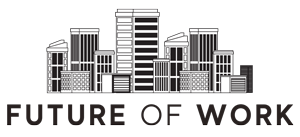Many companies are looking for ways to reduce emissions and reduce costs when it comes to replacing, or buying, tech.
That’s because businesses today are caught in something of a double-bind, there’s a need to continually innovate while at the same time making sure any growth is sustainable. It’s a delicate balance and one that puts pressure on all areas of business – including the very tech that’s enabled companies to innovate and grow across global markets in the first place.
As business leaders become increasingly involved in the climate conversation, and companies set ESG goals, reducing emissions and gearing toward net zero have become top priorities. And the environmental impact of their tech estate can’t be ignored. The other big priority is of course cost. And with the global economy still facing headwinds since the Covid-19 pandemic, many businesses have tackled twin pressures of rising tech prices and smaller margins. In the face of these twin pressures, then, companies are increasingly shifting their thinking from buying brand new tech.
Instead, as a solution to both carbon footprint and cost concerns, more and more businesses are beginning to invest in refurbished tech.
Making the case for sustainability
Buying refurbished tech – whether when buying new devices or trading in old ones at renewal time – is an approach that echoes the triple bottom line: people, planet, and profit. It addresses the financial pressures businesses face, allows you to recoup the value of your old tech, and significantly reduces your environmental footprint.
The affordability gains can be instantly budget-balancing when considering refurbished tech whether looking at small businesses that purchase ten used laptops, or a hospital buying 300 used tablets. Opting for an 18-month-old smartphone can save businesses and consumers as much as 70% on that of a new device, and up to 50% on laptops, fundamentally reshaping the overall ownership costs for numerous employees.
Consider this: getting hold of a refurbished smartphone over a new one saves 64kg of the CO2 emissions that are produced when manufacturing new devices. It also conserves 244kg of raw materials, prevents the use of 76,000 liters of water per device, and avoids adding 200g of e-waste to landfill. Scale this up by the number of device users in your company and you begin to see what kind of an impact it can have.
It’s no small matter. As individuals and business we need to listen to the increasingly urgent calls for practical solutions to the climate emergency and the growing issue of e-waste. The latter is best highlighted by the sheer scale of the numbers: as a planet, we amassed nearly 54 million tonnes of e-waste in 2019 alone. That number is projected to jump to 74 million tonnes by 2030.
These are statistics that underline the need for us to quickly transition to a more considered form of consumer culture. When it comes to tech in particular, we need to build a circular economy — one that truly maximizes resource utility.
Get ahead of the game
While most companies these days have ESG policies, which call for reductions in emissions and commitments to greener practices, many fail to consider the impact of their tech estate.
At Alchemy, we’ve spoken to leaders all over the world about their tech and we’ve seen a repeating pattern – businesses today face unique challenges in balancing rapid growth and sustainable practices.
Investing in refurbished tech can address financial constraints while contributing to your company’s green plans. It can play a big part in showing your organization is open to innovation in a bid to being more sustainable, while closing the loop in the wider tech market.
Here are three things you can do to pave the way for bringing refurbished tech to your company.
- Consider the position of your device tech stack within your ESG policy. ESG goals are crucial as we aim for net zero and your tech stack could be one of the highest-impact areas of your business in terms of emissions. Think about including guidelines around the way your business disposes of unused devices, remembering that by trading in your old devices and replacing them with refreshed ones, your Scope 3 emissions – and your environmental impact more generally – will be significantly less. Meeting these ESG goals, and being able to show you’ve met them, could be vital in the coming years.
- Speak to the experts. A trusted partner can help you can gain insight into the many benefits that purchasing refurbished tech – rather than new devices – can have for your business. This includes understanding the economic benefits of refurbished tech, but also learning the significant CO2e savings achievable by trading in and opting for refreshed devices. Your partner should guide you through selecting high-quality, refurbished tech (which is up to 50% more cost-effective than buying new) that meets your performance needs and retains optimal residual value. That means you’ll also be able to capitalise on your devices’ value through trade-in, when replacing them in the future.
- Calculate the approximate value of your tech estate to see how much money you will save in real terms through trading in unused devices. It’s when you have a full picture of the value you can generate from the tech you already own that the cost savings will become apparent. And knowing you can add that value to your budget will give a welcome boost to any business.
Currently, companies around the world aren’t always prioritizing their tech estate when it comes to environmental impact. But it’s an oversight that could make a huge difference, especially to a service-based business.
And companies in the US seem to be blazing the trail. Sustainability has become such a pressing concern that we’re seeing a distinct shift in procurement processes. Organizations are recognizing that circular economy trends include being able to write Request for Proposals (RFPs) that specify not just the number, age, and types of devices required, but also the equipment that will be traded in as part of the contract. It’s a clear signal of a maturing mindset – one that reconciles the economical with the ecological.
Busting myths around refurbished tech
It’s clear that shifting to a strategy of buying refurbed tech faces hurdles. Not least because there are some persistent myths that have grown up around refurbished tech. Here are just a few of them:
- “Refurbished tech is unreliable.” This is one of the biggest misunderstandings about refurbished tech. In fact, refreshed devices undergo stringent checks, including a verified data wipe and functionality testing. And all batteries are at least 80% capacity, ensuring reliability.
- “Refurbished tech isn’t up to date.” Buyers have a full spectrum of devices to choose from. That means they can decide on anything from the latest model to one that’s a few generations old. Just like buying new, all options are available: it’s a question of spec priorities and price.
- “Refurbished tech has a short lifespan.” A refurbished device promises a lifespan comparable to new equipment. Considering that iPhones are designed to last seven years, a one-year-old, refurbished iPhone should serve at least another six years.
Knowing these truths can make it easier for businesses to decide on refreshed tech. But still you should talk to sellers about their device testing, refurbishing processes, scope out warranties and returns policies, and confirm aftersales support before you buy. Doing your due diligence is the best and only way to make sure you enjoy a smooth, no-surprises investment in second-life tech.
Convincing bosses about the benefits
We know that making a decision in an organization is never easy. Even if you’re convinced about renewing your existing products with refurbished devices, there’s still a chance you’ll face internal resistance. In this case here are three tangible benefits you should mention:
CO2 savings: At Alchemy, we partner with Greenly, the global carbon accounting platform, to certify the CO2e saving of every device we refurbish and remarket. By using our carbon calculator, you can see how much your company is saving in emissions by buying refreshed devices. This kind of clear data is perfect proof of the positive impact.
Tax benefits: Inform your company of the tax incentives that you could receive thanks to choosing refurbished tech. Of course tax rules differ by jurisdiction, but EU countries like France and the Netherlands might offer reduced Goods and Services Tax schemes, for example. The same countries, plus nations such as the US, the UK and Australia, have also traditionally offered deductions and credits for buying second-hand equipment, like bonus depreciation. Check each region’s tax code carefully for a clear understanding of how you could benefit.
Cost comparison: Provide a clear cost-benefit analysis contrasting refurbished tech with new purchases, underscoring the significant savings and their potential reallocation towards other company needs. You should also consider the value of trading in your unused devices as well, which can give you a welcome boost.
By opting for refurbished tech and trading in unused ones, or those at the end of their term, businesses can save money, redeem value, and help to reduce environmental impact. The sooner we get the message out, the sooner we can all reap the benefits.

Stephen Wise is a leader in marketing and marketing services, boasting a proven track record of driving growth. With over 20 years of experience in business leadership, Stephen began his journey in creative agencies before advancing to lead his own agency and martech company. Throughout his career, he has collaborated with renowned brands such as Unilever, BBC, Heineken, Diageo, Audi, Live Nation, Scholl, and RNIB.
Currently serving as the Global Marketing Director at Alchemy Global Services, Stephen oversees the marketing, brand, digital, and product functions across both their B2B (Alchemy) and B2C (Loop Mobile) divisions, prioritizing audience and commercial growth.
In his leisure time, Stephen chairs a charity dedicated to providing mentoring and support services for 18-30 year old entrepreneurs, aiding them in the early stages of business creation and growth.






